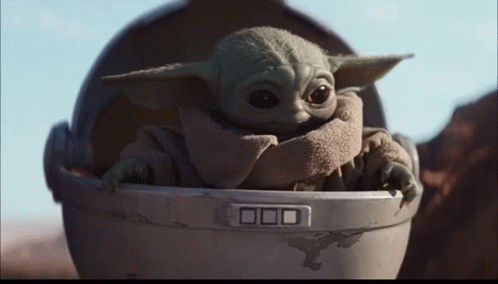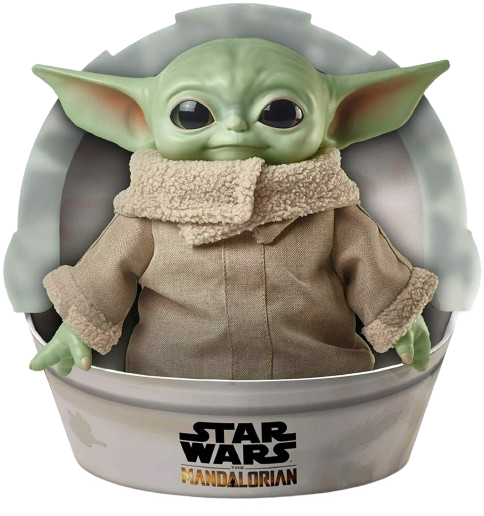

As described by his nicknames, Grogu is a “child”, a “baby”, a babyfied version of Star Wars’ main sagas’ Yoda. When he is first introduced, Baby Yoda is sitting in what appears to be a flying pram, or a stroller. According to Szostak (2020, p. 81), the object is called a “Hovering Pram”. Throughout the show, the Hovering Pram has become a recurrent item used by the character as a locomotion engine. While this was mainly done to facilitate the job of the puppeteers and CGI artists, the design remained established for fans, and for the production companies (Szostak, 2020). This is visible through the amount of merchandise and toys displaying the pram. Many of the toys portray Baby Yoda in his pram on the packaging, and some even incorporate the stroller directly into the product (Cirigliano, 2020).
Interestingly, in Mattel’s version of the toy, the packaging itself is representing the Hovering Pram. The Plush is installed in the package in the same way Baby Yoda is installed in his pram on the show. For Dale et al. (2016), packaging is not only an important part of a toy for its economic importance, but also as a key feature of its cuteness. Indeed, an original and cute packaging produces an “affect of empathy” (p. 221). The packaging becomes an important selling point, principally in cuter toys. In the case of Mattel’s Baby Yoda plush, the cuteness and originality is contained within the pram itself.

Displaying an object in something that is primarily used by parents for their child produces the “aww factor” that Dale et al. (2016, p. 35) illustrate. The summation of the packaging, the cute features of the plush and the character itself may further the maternal instinct felt when seeing the toy, leading to a stronger desire to buy the product (Miesler et al., 2011; Dale et al., 2016; Hoke, Smit, 2022).